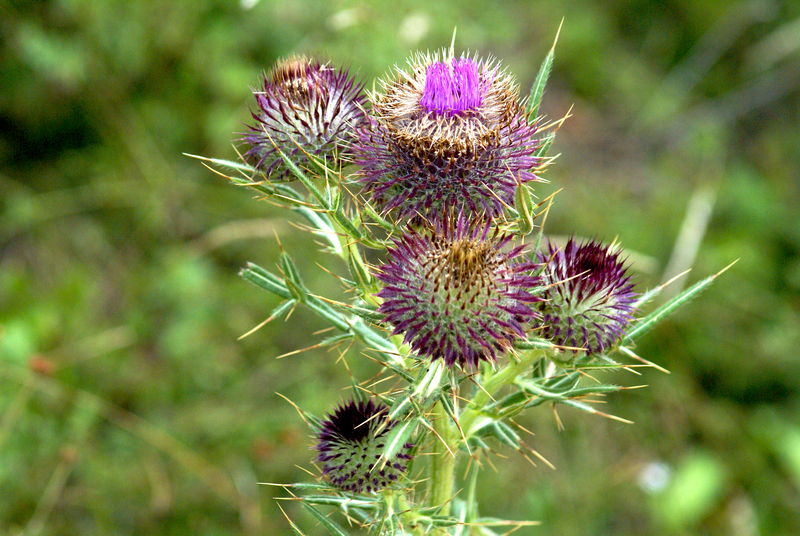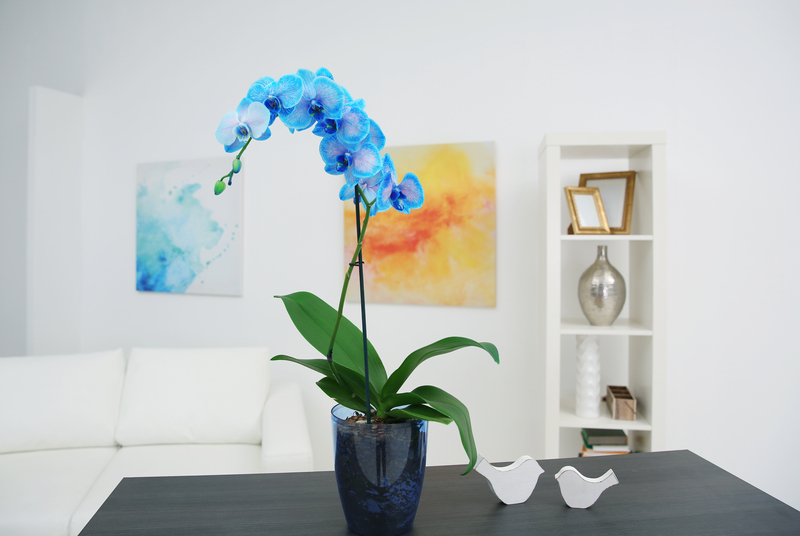Dog-Approved Gardening Tips for Your Outdoor Space
Posted on 30/08/2025
Dog-Approved Gardening Tips for Your Outdoor Space
Creating a beautiful and functional garden while sharing your outdoor space with your furry friend can be a rewarding challenge. With thoughtful planning, you can establish a lush, thriving landscape that's both safe and enjoyable for your dog--and visually appealing for you! In this comprehensive guide, you'll discover dog-approved gardening tips, expert insights, and practical strategies to ensure your outdoor haven is both pet-friendly and vibrant all year round.

Why Focus on Dog-Friendly Gardening?
Many pet parents relish the joy of watching their dogs play in the yard. However, it's essential to remember that several traditional gardening practices and plants can pose real risks to canines. Approaching gardening with your dog in mind helps:
- Minimize potential hazards from toxic plants and chemicals
- Reduce garden destruction caused by digging, trampling, or boredom
- Encourage healthy play and exercise for your pet
- Create designated spaces for canine exploration
- Boost the beauty and value of your property
Dog-friendly gardening doesn't require a sacrifice of style or productivity--you simply need to implement a few smart adjustments.
Plan Your Dog-Friendly Garden Layout
Every successful outdoor space starts with a clear plan. Designing your dog-approved garden involves considering your dog's breed, age, energy levels, and behavioral tendencies. Here are essential layout strategies:
1. Assess Your Dog's Needs
- Observe your dog's natural routes--these are known as "dog paths". Incorporate them into your design to prevent repeated trampling of sensitive plants.
- Think about your pet's favorite activities, such as lounging in the sun, seeking shade, or digging. Designate zones for these behaviors.
- Adjust garden barriers and borders depending on your dog's size and athleticism.
2. Safety First with Fencing
A secure fence is crucial for keeping your dog--and your plants--safe. Here's what to keep in mind:
- Install fencing that's tall enough to prevent jumping over (usually 1.2m to 1.8m, depending on breed).
- Regularly check for gaps or dig-through spots at the base of fences.
- Choose materials that won't splinter or injure your dog, such as vinyl, metal, or well-finished wood.
Choose Dog-Safe Plants for Your Garden
One of the most critical dog-friendly gardening tips involves the selection of non-toxic, resilient plants. Sadly, many common garden varieties--from lilies to azaleas and oleander--are highly poisonous to dogs. Let's explore the best pet-safe plants and groundcovers:
Dog-Safe Flowers and Shrubs
- Sunflowers (Helianthus annuus): Hardy and cheerful sunflowers pose no known risks to dogs.
- Marigolds (Tagetes): These easy-to-grow blooms are safe and can even help deter pests.
- Snapdragons (Antirrhinum majus): Bright, whimsical, and dog-friendly.
- Camellias: Classic flowering shrubs that add year-round appeal and are non-toxic.
- Rosemary & Thyme: Fragrant herbs that are safe for canines and useful in the kitchen!
Tough and Safe Groundcovers
- Creeping Thyme: Durable, low-growing, and safe for your pet to walk on--or even nibble!
- Irish Moss: Soft texture and low maintenance make it ideal for dog paths.
- Elfin Creeping Thyme: Tolerates occasional paw traffic and stays green most of the year.
- Buffalo Grass: A drought-tolerant option for dogs who love to romp and play.
Plants to Absolutely Avoid
For the safety of your dog, never plant the following:
- Lilies (all varieties)
- Azalea & Rhododendron
- Sago Palm
- Foxglove
- Oleander
- Daffodil Bulbs
- Yew
If you're ever in doubt, check the ASPCA's online database of pet-safe and toxic plants.
Use Mulch and Soil Smartly
Mulching helps conserve soil moisture, reduce weeds, and enhance your garden's look. But not all mulches are created equal when it comes to canine companions. Here are essential dog-approved gardening tips related to soil and mulch:
- Avoid cocoa mulch: It contains theobromine, which is toxic to dogs (just like chocolate).
- Opt for pine, cedar, or shredded hardwood: These options are generally safe and pleasant underfoot.
- Use pea gravel or smooth river stones for high-traffic or dog-relief areas--they stay cleaner than bark mulch.
- Avoid chemically treated mulch or colored mulch, which may leach harmful substances into the soil.
When it comes to soil amendments, steer clear of synthetic fertilizers, pesticides, and herbicides. Instead, use organic compost, manure, and natural pest control methods to maintain a pet-friendly garden.
Create Dog Zones: Digging, Playing & Relaxing
One of the most effective ways to keep your garden beautiful and intact is to give your dog their own outdoor space for digging, playing, and relaxing. This suggestion is often overlooked but can make or break your landscaping success.
1. Designate a Digging Pit
- Choose a shady or semi-shady part of the yard.
- Fill with loose, soft sand or dirt (not gravel or mulch).
- Bury favorite toys or treats to encourage use.
- Redirect your dog gently whenever they start to dig elsewhere.
2. Establish Play Zones
- Artificial turf or durable natural grass is best for rough play.
- Add tunnels, ramps, or agility equipment to burn off energy and prevent boredom.
- Ensure clear lines of sight so your dog can run without crashing into plants.
3. Create Rest Areas
- Install a shaded nook using a pergola, shade sail, or large bush.
- Provide a comfortable dog bed or outdoor-safe mat.
- Place a sturdy water bowl within easy reach--hydration is especially important in summer months.
Water Features & Dog Safety
Many gardeners love adding a pond, fountain, or birdbath to their outdoor sanctuaries. But it pays to be cautious when your furry friend is involved. Here's how to include water features while prioritizing dog safety:
- Ensure all ponds or pools have gradual edges or a ramp for easy exit if your dog falls in.
- Choose shallow water elements that don't pose a drowning risk for small or medium dogs.
- Avoid using algaecides or pond chemicals toxic to pets.
- If using a birdbath, select a sturdy, non-tip design that won't spill if nudged by a nose or tail.
Compost, Fertilizers, and Natural Pest Control
Many commercial garden products, such as slug bait, synthetic fertilizers, and certain composts, can be harmful or fatal to dogs.
- Keep compost bins securely lidded or fenced to avoid canine scavenging (rotting food and fungi can be dangerous).
- Favor organic, pet-safe fertilizers like composted manure, bone meal (be cautious as it can cause digestive upset if consumed in large quantities), and seaweed.
- Choose natural pest deterrents--diatomaceous earth, neem oil, or introducing beneficial insects like ladybugs or nematodes.
- Never use cocoa hull mulch, snail bait with metaldehyde, or rodenticides where pets roam.
Maintenance Habits to Keep Your Garden Dog-Friendly
Ensuring your gardening space remains safe for dogs isn't a one-time feat--it's about ongoing maintenance and care. Here are sustainable habits to adopt:
- Regularly patrol the garden for sharp objects, plant debris, or hazards.
- Routinely check that fencing, gates, and barriers are intact and escape-proof.
- Supervise your pet when introducing new plants or garden features.
- Clean up pet waste promptly to prevent lawn spots and disease spread.
- Prune or trim plants to avoid overgrown branches that might poke or scratch your dog.
Training Tips for Garden Harmony
Training plays a pivotal role in successful dog-proof gardening. Combine basic obedience cues with positive reinforcement to help your dog learn which areas are off-limits and which are theirs to enjoy.
Essential Training Steps
- Mark Garden Boundaries: Use clear visual and scent cues (like low decorative fencing or aromatic herbs).
- Reinforce "Leave It" Command: Practice regularly with treats and praise when your dog avoids forbidden plants.
- Offer Alternatives: Provide engaging toys, fetch zones, and puzzle feeders to capture attention.
- Consistent Supervision: Spend time in the garden with your pet to establish routines and discourage bad habits early.
Never punish digging or chewing--redirect and reward alternative, garden-friendly behaviors.
Garden Design Styles That Suit Dogs
Several garden design philosophies naturally align with canine needs. Consider these dog-friendly landscaping styles for your home:
1. Cottage Gardens
- Overflowing beds of robust perennials withstand playful paws.
- Gravel or bark paths double as "dog routes."
2. Minimalist or Zen Gardens
- Open lawns, smooth stones, and simple water features offer space for romping and relaxation.
3. Edible Gardens
- Fenced veggie or herb patches keep produce safe while giving your dog their own supervised harvest area (think carrots or blueberries--which are safe for most dogs).
Frequently Asked Questions About Dog-Appropriate Gardening
Can I Grow a Vegetable Garden if I Have a Dog?
Yes! Just use raised beds, secure fences, and supervise harvests. Avoid onions, garlic, and chives (which are toxic to dogs) in accessible areas.
Are There Any Natural Ways to Stop Dogs from Digging Up Plants?
Aside from training, consider planting prickly or aromatic herbs (like rosemary or lavender) along borders, or using safe physical barriers such as decorative stones or low fencing as deterrents. Always provide a designated digging spot to redirect the behavior.
What Should I Do If My Dog Eats a Potentially Poisonous Plant?
Act quickly--remove any remaining plant matter from your dog's mouth, call your veterinarian or a pet poison helpline, and identify the plant if possible. Take a sample or photo to aid in treatment.
How Can I Protect My Lawn from Urine Spots?
Water the area immediately after your dog relieves themselves to dilute the urine. Consider using hardy grass types like Buffalo grass or installing a separate potty area with gravel. There are also dietary supplements, but consult your vet before use.

Conclusion: A Lush, Pet-Approved Outdoor Oasis
With thoughtful planning and maintenance, you can create a dog-approved garden that's safe, sustainable, and beautiful for your entire family--paws included. Remember, successful outdoor spaces for dogs blend secure boundaries, non-toxic landscaping, creative play areas, and a splash of canine training. By following these expert gardening tips, you'll nurture a thriving home landscape that dogs and humans alike will love for years to come.
Further Resources on Dog-Friendly Gardening
- ASPCA Poisonous Plant Guide
- Humane Society: Safe Gardening with Pets
- Dog-Friendly Garden Products at Gardener's Supply
Happy gardening--and happy tails!

